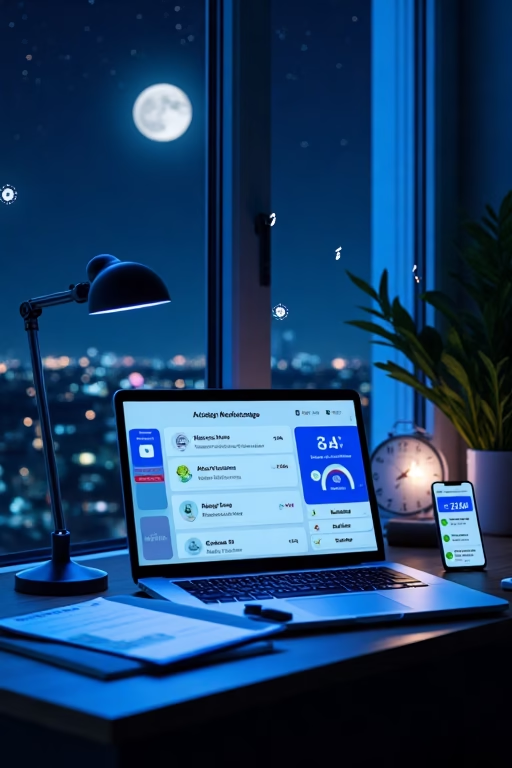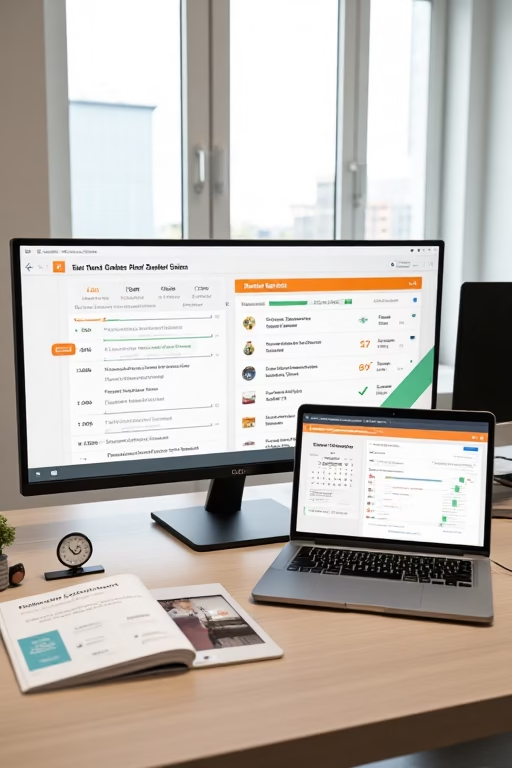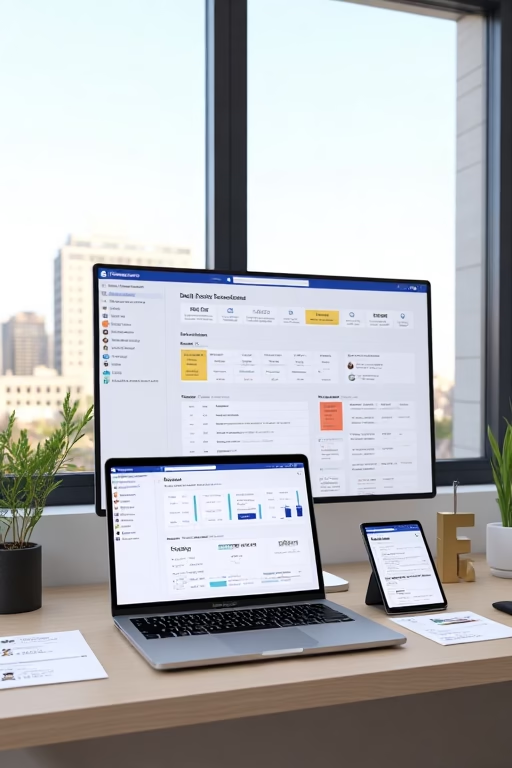This AI Replies to Leads While You Sleep (Seriously)
This AI Replies to Leads While You Sleep (Seriously)
Your 24/7 Lead Engagement Blueprint by Market Wiz
Table of Contents
- Introduction: Never Miss a Lead Again
- 1. Why AI Auto‑Replies Matter
- 1.1 Responding at Peak Times
- 1.2 Building Instant Trust
- 1.3 Scaling Without Staff
- 2. How It Works Under the Hood
- 2.1 NLP & Intent Recognition
- 2.2 Template & Variable Mapping
- 2.3 Channel Integrations (SMS, Email, Messenger)
- 3. Choosing Your AI Reply Tool
- 3.1 No‑Code Chatbot Platforms
- 3.2 Custom AI via API
- 3.3 Cost & Feature Comparison
- 4. Integrating & Setting Up
- 4.1 Connecting CRMs & Lead Sources
- 4.2 Configuring Message Webhooks
- 4.3 Securing API Keys & Tokens
- 5. Crafting High‑Impact Templates
- 5.1 Greeting & Qualification
- 5.2 Dynamic Product & Pricing Info
- 5.3 Clear Next‑Step Calls‑to‑Action
- 6. Building Automated Workflows
- 6.1 Initial Inquiry Sequence
- 6.2 Reminder & Nudge Flows
- 6.3 Escalation to Live Sales Rep
- 7. Monitoring & Optimization
- 8. Best Practices & Compliance
- Conclusion & Next Steps
- 25 Frequently Asked Questions
- 25 Extra Keywords
Introduction: Never Miss a Lead Again
Imagine waking up to fresh leads already engaged, qualified, and scheduled—all without lifting a finger. An AI auto‑replier can handle inbound inquiries around the clock, instantly delivering personalized responses and capturing critical details. In this guide, we’ll show you how to deploy an always‑on AI responder that turns every after‑hours visitor into a potential sale.
1. Why AI Auto‑Replies Matter
1.1 Responding at Peak Times
Buyers often browse evenings and weekends. Instant replies at those off‑hours capture impulse interest before competitors respond.
1.2 Building Instant Trust
AI answers within seconds, demonstrating reliability and professionalism—key factors in winning over cautious prospects.
1.3 Scaling Without Staff
Automate hundreds of simultaneous chats without hiring extra support, slashing overhead while preserving lead quality.
2. How It Works Under the Hood
2.1 NLP & Intent Recognition
Natural Language Processing engines parse incoming messages, detect buyer intent (pricing, availability, demo requests), and select the appropriate response.
2.2 Template & Variable Mapping
Dynamic templates use placeholders (e.g., {{product_name}}, {{budget}}) to inject accurate details pulled from your CRM or inventory.
2.3 Channel Integrations
Seamlessly connect to SMS gateways, email platforms, and Facebook Messenger for unified lead engagement across every touchpoint.
3. Choosing Your AI Reply Tool
3.1 No‑Code Chatbot Platforms
Platforms like ManyChat, Chatfuel, and Tars offer drag‑and‑drop builders, pre‑built AI modules, and direct Facebook/website integrations.
3.2 Custom AI via API
For advanced use cases, integrate OpenAI’s GPT models or similar via REST API, enabling fully customized conversational logic and fallback handling.
3.3 Cost & Feature Comparison
Compare pricing tiers, message quotas, NLP sophistication, analytics dashboards, and support levels to find your best fit.
4. Integrating & Setting Up
4.1 Connecting CRMs & Lead Sources
Link your Salesforce, HubSpot, or custom CRM to feed lead data and context into the AI, ensuring responses reference accurate customer history.
4.2 Configuring Message Webhooks
Set up secure webhook endpoints to receive inbound messages in real‑time and trigger AI reply functions.
4.3 Securing API Keys & Tokens
Store credentials in environment variables or a secrets manager, and rotate tokens periodically to maintain security.
5. Crafting High‑Impact Templates
5.1 Greeting & Qualification
“Hi {{first_name}}! Thanks for reaching out about {{product_name}}. Are you looking to purchase this week or need more details?”
5.2 Dynamic Product & Pricing Info
“Our {{product_name}} starts at ${{price}}. Available colors: {{colors_list}}. Would you like to schedule a demo?”
5.3 Clear Next‑Step Calls‑to‑Action
“Reply YES to reserve your slot, or type ‘CALL’ to request a live callback in the next 15 minutes.”
6. Building Automated Workflows
- Step 1: Instant AI greeting & lead qualification.
- Step 2: Send pricing, availability, and scheduling link.
- Step 3: Follow‑up reminder 2 hours later if no reply.
- Step 4: Escalate to human rep on keyword trigger (e.g., “AGENT”).
7. Monitoring & Optimization
- Track response time and completion rates in your AI dashboard.
- Analyze fallback triggers to refine NLP models and template accuracy.
- A/B test greeting styles and CTAs to maximize engagement.
8. Best Practices & Compliance
- Maintain a friendly, human tone—avoid overly robotic language.
- Respect privacy: don’t ask for sensitive PII via automated prompts.
- Include opt‑out instructions (“Reply STOP to end conversation”).
- Stay within messaging limits to avoid platform rate caps.
Conclusion & Next Steps
Deploying an AI responder means every lead—day or night—gets instant attention. Begin by selecting your chatbot or API platform, integrate your lead sources, craft dynamic templates, and launch your overnight workflows. Monitor performance, refine your scripts, and enjoy a fully automated, always‑on sales engine.
25 Frequently Asked Questions
1. Does AI really reply instantly?
Yes—most platforms respond in under 2 seconds.
2. Do I need coding skills?
No—no‑code builders handle basic setups; APIs require minimal developer help.
3. Which channel works best—SMS or Messenger?
It depends on your audience; many use both for maximum coverage.
4. Can AI handle complex questions?
It can handle FAQs; escalate more nuanced queries to a human agent.
5. How do I secure customer data?
Use encryption at rest/in transit and follow GDPR/CCPA guidelines.
6. What if AI misinterprets a message?
Set fallback rules to route low‑confidence cases to your sales team.
7. Can I personalize messages?
Yes—use dynamic tokens for names, products, and pricing.
8. How much does it cost?
Plans range from free tiers to \$100+/month depending on volume.
9. Is human backup required?
Recommended for complex negotiations and high‑value deals.
10. How do I measure ROI?
Compare lead-to-sale conversion rates before and after automation.
11. Can AI schedule appointments?
Yes—integrate calendar APIs to let clients book directly in chat.
12. What about multi-language support?
Use AI engines with built-in multilingual capabilities or set up separate bots per language.
13. Are there message limits?
Platforms and carriers impose caps; choose plans that fit your volume.
14. How often should I review templates?
Monthly—update based on performance analytics and new offers.
15. Can AI upsell?
Yes—build flows that suggest complementary products or services.
16. Do I need a separate number?
For SMS, using dedicated numbers improves deliverability and tracking.
17. How to handle spam filters?
Maintain low daily volumes and include opt‑out links to stay compliant.
18. Can I integrate with my CRM?
Most tools offer native integrations or webhooks to sync lead data.
19. Is it legal?
Yes—follow telecom regulations (TCPA) and platform messaging policies.
20. How to train my team?
Provide quick tutorials and cheat‑sheets on bot workflows and handoff triggers.
21. Will AI replace human sales?
It augments—handling routine inquiries so reps can focus on closing.
22. What analytics are available?
Response times, completion rates, fallback counts, and conversion metrics.
23. How to ensure message relevance?
Continuously refine your intent models and review conversation logs.
24. Can AI handle group leads?
Yes—configure chatbots for Messenger groups or social page inquiries.
25. What’s my first step?
Choose an AI platform, connect one lead source, and deploy a simple greeting flow tonight.
25 Extra Keywords
- AI lead auto-reply
- overnight chatbot
- 24/7 sales bot
- instant lead engagement
- AI sales assistant
- always-on chatbot
- automated follow-up
- AI response templates
- no-code chatbot builder
- custom AI integration
- Messenger auto-responder
- SMS lead bot
- Email AI responder
- NLP lead qualification
- dynamic message placeholders
- sales workflow automation
- chatbot performance metrics
- fallback to human agent
- GDPR compliant chatbot
- TCPA SMS compliance
- API key security
- CRM chatbot integration
- predictive sales bot
- lead scoring AI
- Market Wiz AI guide
This AI Replies to Leads While You Sleep (Seriously) Read More »






